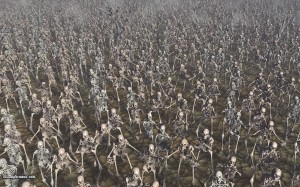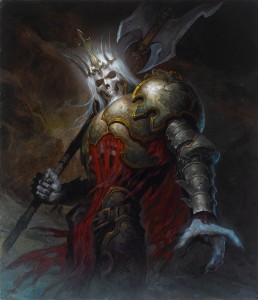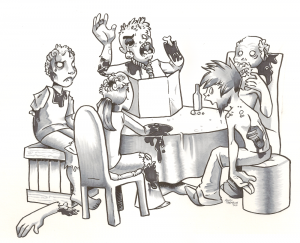On Friday we comb through our extensive archives to find an older article that we feel deserves another look. From April 30, 2013, Dungeon’s Master once again presents: Zombies – Breathing Life into an Overused Undead.
First it was Vampires. Then it was werewolves. Now the popular media seems obsessed with zombies. Where the Vampires and Werewolves got the Twilight treatment and were essentially emasculated by removing the fear factor, zombies for the most part have stayed true to their traditional monstrous selves that everyone’s come to know and expect.
Zombies are everywhere. AMC’s Walking Dead is one of the most popular shows on TV, and the comic that it’s based on is still going strong after 100 issues. It seems that there are more and more zombie novels on the shelves these days than ever before, and there have never been as many big-budget Hollywood movies featuring the undead menace as there are this year.
We’ve practically reached a point where zombies have become a cliché. They’re overused and dare I say it, are starting to bore us. After all, how many different ways can you tell a story that involves a zombie apocalypse? Well, that depends on how imaginative you are. The key to telling an interesting zombie story, or in the case of gamers, running an interesting zombie-themed camping, is to use an angle that we haven’t seen before or at least hasn’t been used to death.



